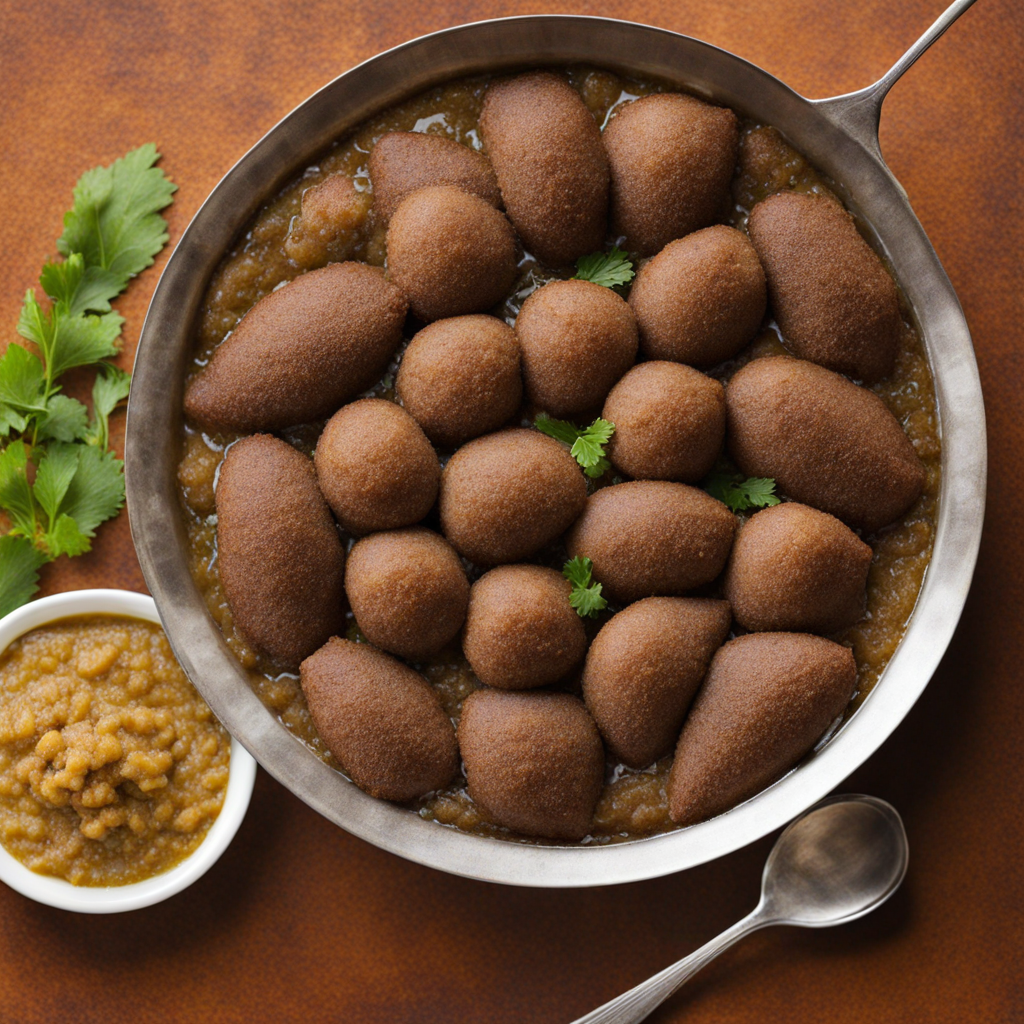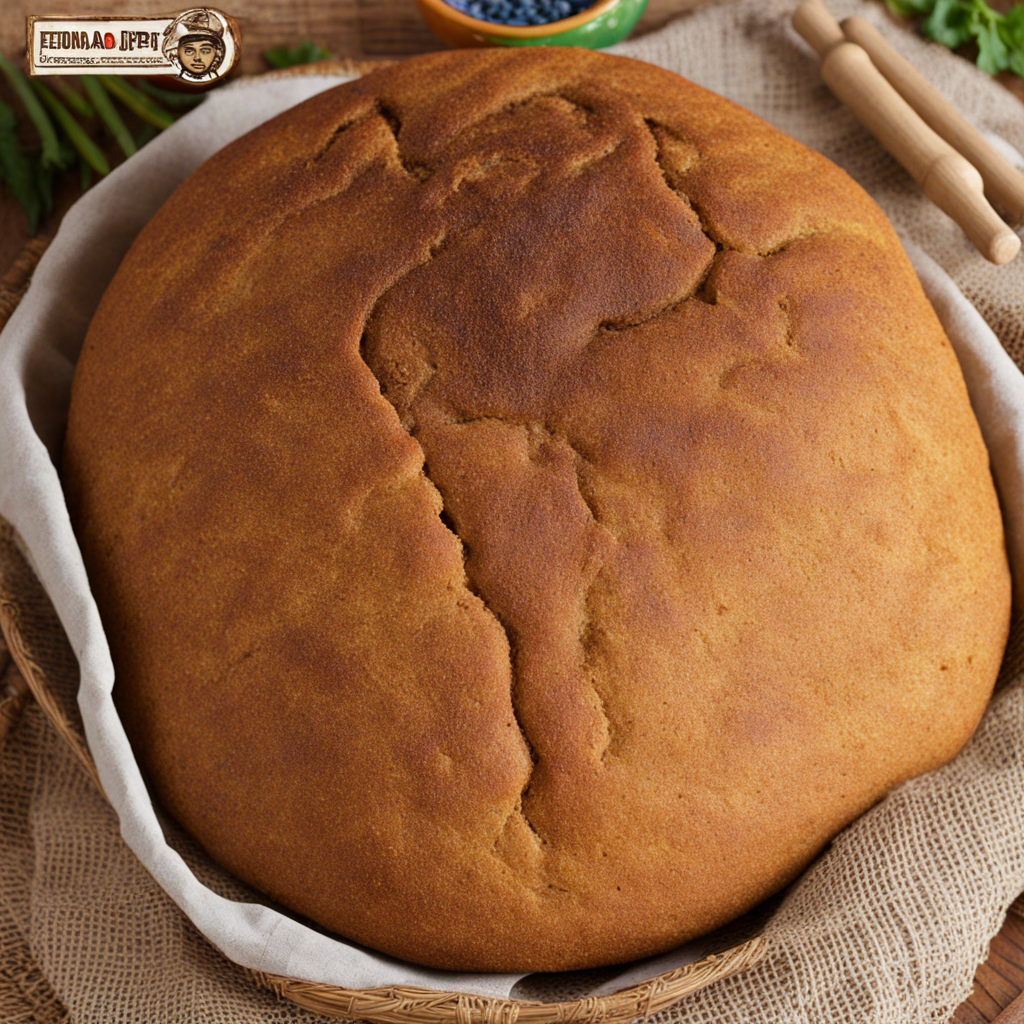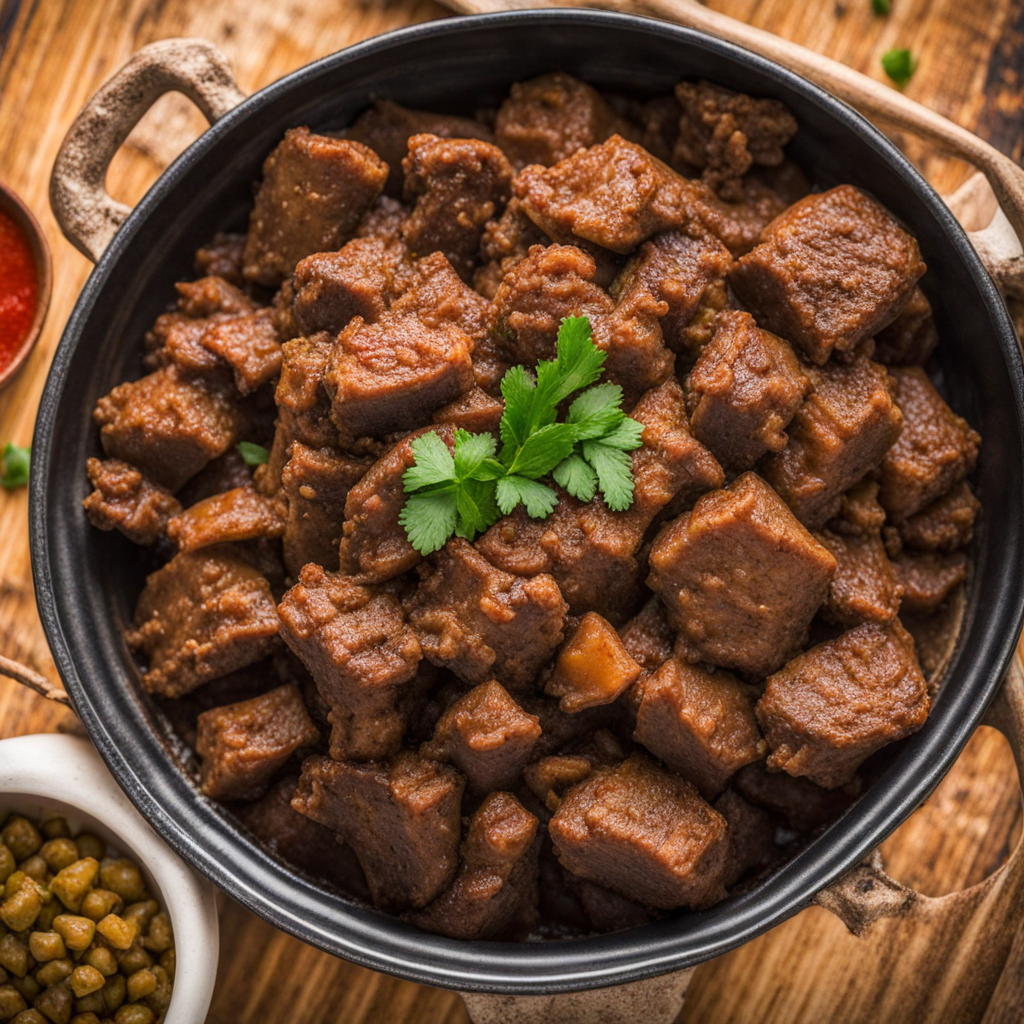Mitmita
Mitmita is a vibrant and spicy Ethiopian condiment that offers a unique taste experience, appealing to adventurous palates. This fiery blend is primarily made from freshly ground Ethiopian spices, including berbere, which is a key ingredient in many Ethiopian dishes, as well as cardamom, cloves, and salt. The combination results in a vivid red powder that not only adds heat but also a depth of flavor that can elevate any dish. Mitmita is often used as a seasoning for meats and vegetables, providing a warm, aromatic kick that is both rich and complex.
How It Became This Dish
The History of ሚትሚጣ (Mitmita): A Spicy Ethiopian Delight #### Origins Mitmita, a traditional Ethiopian spice blend, is a culinary gem that embodies the rich cultural tapestry of Ethiopia. The origin of Mitmita can be traced back to the diverse ethnic groups inhabiting the Ethiopian highlands. Ethiopia is known for its vibrant agricultural practices, which have produced a variety of ingredients that are essential to its rich culinary heritage. Mitmita is primarily composed of ground chili peppers, cardamom, and salt, with some variations incorporating additional spices such as cloves and cumin. The word "Mitmita" itself is derived from the Amharic language, which is the official language of Ethiopia and one of several languages spoken by its people. The term refers to both the spice blend and the dishes that feature it, reflecting its integral role in Ethiopian cooking. The use of spice blends in Ethiopian cuisine is not just a matter of flavor; it is also a way to connect with the land, heritage, and the diverse communities that have shaped Ethiopian society over centuries. #### Cultural Significance Mitmita is more than just a seasoning; it is a symbol of Ethiopian identity and tradition. Spice blends like Mitmita reflect the country's agricultural bounty and the importance of communal eating practices. In Ethiopian culture, food is often served on a large shared platter called a "mesob," where family and friends gather to enjoy meals together. This communal aspect of dining fosters connections among people, making food a crucial part of social interactions. Traditionally, Mitmita is used as a condiment, often served alongside raw meat dishes, particularly "kitfo," a dish made of minced raw beef seasoned with spices. The preparation of kitfo is an art in itself, and the accompanying Mitmita elevates the dish with its heat and complexity. The spiciness of Mitmita is also a celebration of Ethiopian resilience; it reflects the people’s ability to thrive in a challenging environment, using available resources to create vibrant flavors. In addition to its role in everyday meals, Mitmita is often used during special occasions and celebrations. It can be found at weddings, religious ceremonies, and festivals, where it enhances dishes and symbolizes hospitality. Offering food seasoned with Mitmita to guests is a way of expressing warmth and welcoming them into one’s home. #### Development Over Time The development of Mitmita as a spice blend has evolved in tandem with Ethiopian cuisine, which has been influenced by trade routes and interactions with neighboring cultures. Ethiopia's location at the crossroads of Africa and the Middle East has allowed for the exchange of ingredients, techniques, and culinary traditions. The use of spices in Ethiopian cooking can be traced back to ancient times, with references to spice trade in historical texts. As trade flourished, so did the popularity of various spices, including chili peppers, which were introduced to Ethiopia in the 16th century by Portuguese traders. These peppers became a crucial component of many Ethiopian dishes, including Mitmita. The inclusion of local spices, combined with influences from various cultural interactions, has led to the unique flavor profile of Mitmita that we know today. In the 20th century, as Ethiopia underwent significant political and social changes, the culinary landscape also transformed. The rise of urbanization and globalization introduced new flavors and ingredients, prompting adaptations in traditional recipes. While the core components of Mitmita remained intact, modern interpretations began to emerge, with chefs experimenting with different spice ratios or integrating Mitmita into fusion dishes. International interest in Ethiopian cuisine has surged in recent years, as more people seek diverse culinary experiences. Ethiopian restaurants have proliferated in cities around the world, showcasing the cultural significance of dishes like kitfo and injera alongside Mitmita. This exposure has helped to popularize Mitmita beyond its traditional context, introducing it to new audiences who may experiment with it in various culinary applications. #### Mitmita in Contemporary Cuisine Today, Mitmita is celebrated not only in Ethiopia but also in the global culinary scene. Chefs and home cooks alike are drawn to this vibrant spice blend, using it to add depth and heat to a variety of dishes. Its application has expanded from traditional Ethiopian fare to include contemporary interpretations in fusion cooking. It can be found in marinades for grilled meats, sprinkled on roasted vegetables, or even blended into sauces. Moreover, the rise of interest in health and wellness has brought attention to the potential benefits of spices like those found in Mitmita. The anti-inflammatory properties of chili peppers and the digestive benefits of spices like cardamom are increasingly recognized, contributing to a growing appreciation for the nutritional aspects of this spice blend. As Ethiopia continues to navigate its complex history and diverse cultural landscape, Mitmita remains a steadfast representation of its culinary heritage. The blend serves as a reminder of the rich traditions that have been passed down through generations, intertwining with the country's social fabric and identity. #### Conclusion Mitmita is more than just a spice blend; it is a reflection of Ethiopia's history, culture, and resilience. Its origins are deeply rooted in the agricultural practices and communal eating traditions of the Ethiopian people. The evolution of Mitmita over time showcases the influence of trade, cultural exchanges, and modern culinary trends, leading to its growing popularity in both Ethiopian homes and international kitchens. As we continue to explore and appreciate the flavors of the world, Mitmita stands out not just for its heat, but for the stories and traditions it carries. It serves as a delicious reminder of the interconnectedness of food, culture, and community—a testament to the enduring legacy of Ethiopian cuisine. So, whether enjoyed in its traditional form or adapted in contemporary dishes, Mitmita invites us to savor the rich cultural history of Ethiopia, one spicy bite at a time.
You may like
Discover local flavors from Ethiopia







